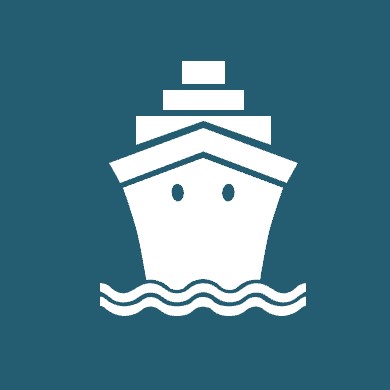
It’s necessary to ban the use of fossil fuels to complete the green transition in shipping. To put it short, this is the main finding of our research study: “Hydrogen fuel cells in shipping: A policy case study of Denmark, Norway, and Sweden”. The study resulted from a collaboration with colleagues in Iceland. It was published in the leading journal Marine Policy (May 2024).
The study aims to identify the policy instruments needed to accelerate the uptake of hydrogen fuel cells for the shipping industries in Denmark, Norway, and Sweden.
Hydrogen fuel cells are promising for reducing emissions from shipping. However, their adoption is limited by high costs, lack of regulations, and lack of infrastructure. This is why there is a need for policies that spur investments in hydrogen fuel cells.
The three policy packages
Together with our fellow researchers, we tested three policy packages with different degrees of ambition (low, medium, and high). Our findings indicated that the proposed taxes on CO2 emissions and fossil fuels can help drive the transition away from fossil fuels. Meanwhile, the complete transition requires a ban on the use of fossil fuels.
The three policy packages were formulated based on discussions during workshops with key stakeholders from Nordic Shipping. During the workshops, we also learned that the participants are paying high attention to a “chicken and egg” paradox: Without the demand for green hydrogen, no supply, and vice versa. This has not been reflected in previous studies.
Correspondingly, a coordinated regional approach and cross-sector and cross-industry collaboration are needed. Otherwise, we cannot overcome the paradox and help balance the supply and demand for Nordic shipping
Modelling

MODEL
We used the TIMES-NEU model, an economic model generator for energy systems, to evaluate the three different policy packages. EML has developed the TIMES-NEU model.

SCENARIOS
Estimated total fuel consumption in PJ/year; CO2 emissions by fuel in thousand tons of CO2 emissions/year; revenue from the tax on fossil fuels in million Euros/year; ferry segment fuel consumption in PJ/year.

RESULTS
The main finding was that policies are needed to spur investments. Meanwhile, it’s necessary to ban fossil fuels to complete the green transition of shipping.
Other scenarios included in the study show estimated CAPEX and OPEX in million Euros/year, estimated CAPEX and OPEX for the ferry segment in million, and estimated CAPEX and OPEX of the mandate of ferries to use hydrogen in comparison to the policy packages in million Euros/year.
The research study is part of the HOPE Project: The authors of the article are:
Mauricio Latapí, Brynhildur Davidsdottir, David Cook, Lara Johannsdottir, MBA, Ph.D., Andrea Marin Radoszynski, and Kenneth Karlsson.
We are grateful for the financial support towards the HOPE project provided by the following organizations: the Nordic Energy Research, the Norwegian Research Council, the Swedish Transport Administration, the Icelandic Centre for Research, Business Finland, the Danish Energy Agency, Stena Rederi AB, and PowerCell Sweden AB.
EML Team: Andrea Marin Radoszynski and Kenneth Karlsson
